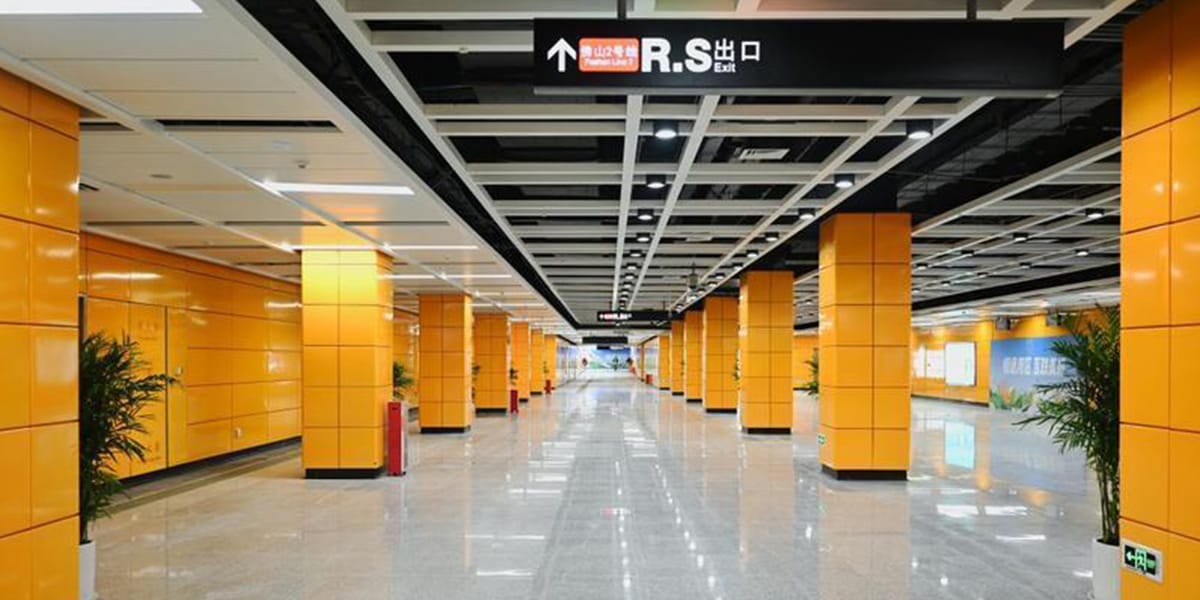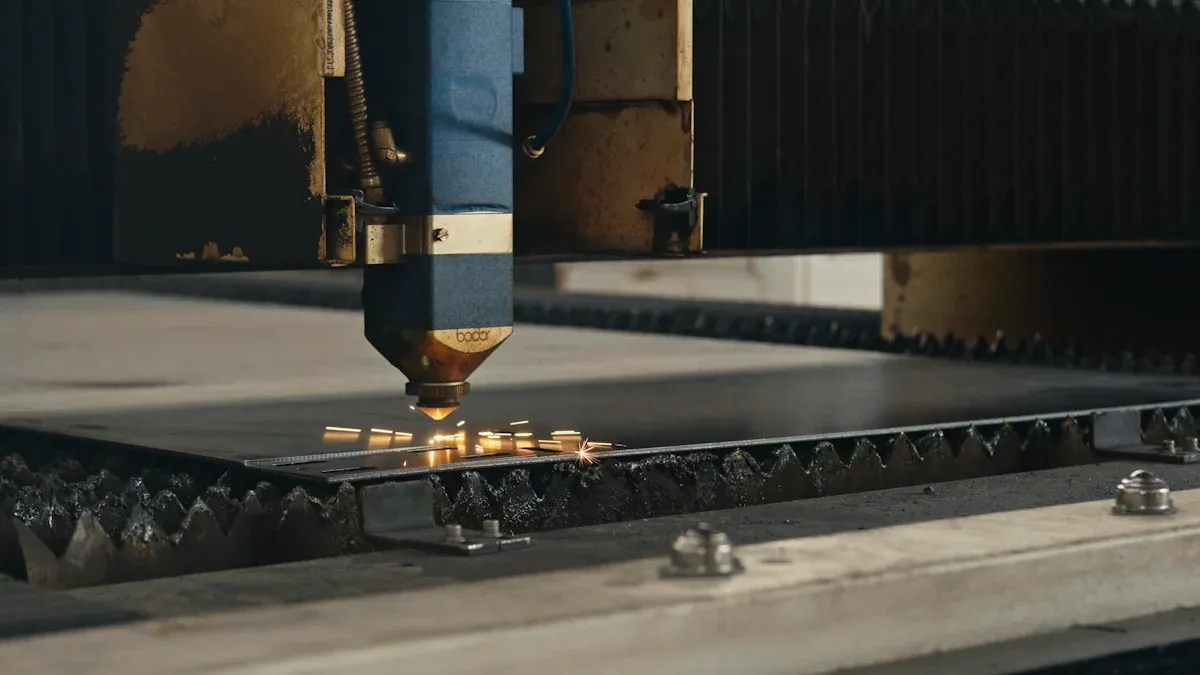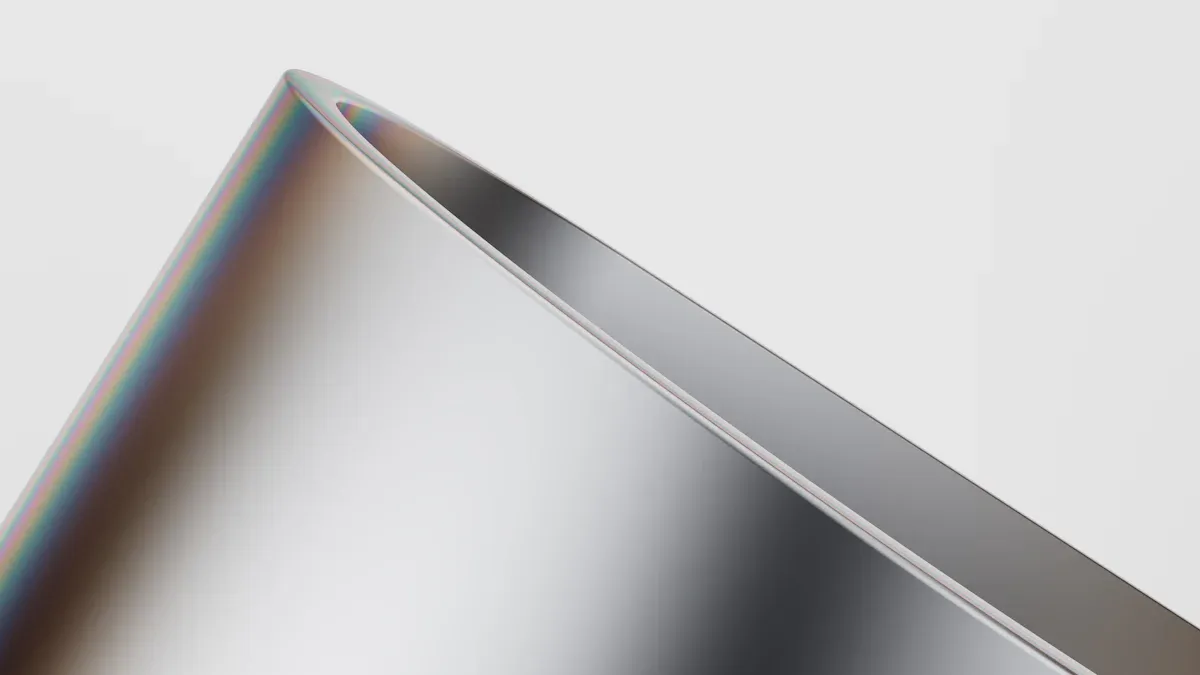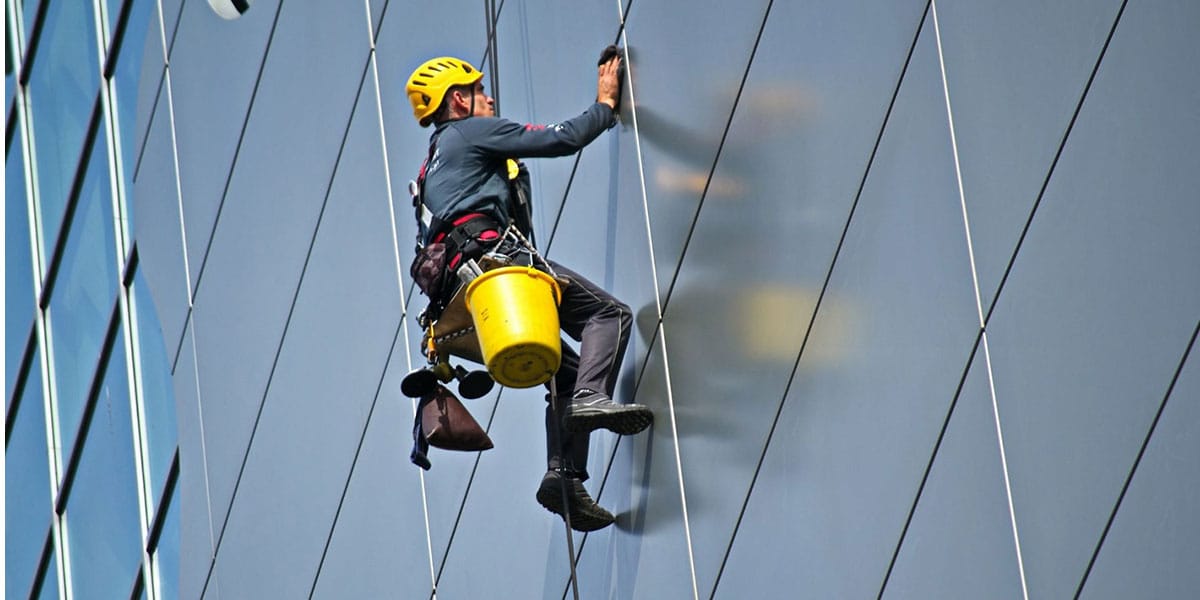
13 Aug Top 10 Tips for Working with Aluminum Composite Material Panels
Table of Contents
- 1 Key Takeaways
- 2 Check Thickness
- 3 Inspect Surfaces
- 4 Confirm Material Quality
- 5 Test Adhesion
- 6 Cutting Aluminum Composite Panels
- 7 Routing and Bending
- 8 Protect Surfaces
- 9 Fastening and Joining
- 10 Installation Guidelines
- 11 Maintenance and Cleaning
- 12 FAQ
- 12.1 How do you store aluminum composite material panels before installation?
- 12.2 Can you paint aluminum composite material panels?
- 12.3 What is the best way to cut aluminum composite panels?
- 12.4 How do you fix scratches on aluminum composite panels?
- 12.5 Do you need special cleaners for aluminum composite panels?
Using the right methods with aluminum composite material panels helps you stop big problems. Many people see delamination, bubbling, or buckling if they do not use best practices. You might also see scratches, seam problems, or coating mistakes if you are not careful when you handle or put in the panels. This guide gives you ten easy ways to keep your aluminum composite panels looking good. If you use aluminum composite material for work or home projects, you can get great results. Painting on aluminum composite panel surfaces is also easier when you follow the right steps.
Key Takeaways
Always check the panel thickness and surface before you start. This helps you avoid problems like bending or dents. It also stops coating damage from happening.
Use the correct tools and ways to cut, route, and bend panels. This gives you smooth edges and strong shapes. It also helps you avoid cracks.
Pick high-quality panels that have the right certifications. Test how well they stick to make sure they are safe. This also makes them last longer and work well.
Be careful when you handle panels. Keep the protective film on and wear gloves. Do not drag the panels. This stops scratches and stains.
Follow the maker’s instructions for putting in and caring for panels. Leave space for the panels to expand. Seal the edges and clean them often with mild soap and water.
Check Thickness
Why Thickness Counts
It is important to look at the thickness of your panels. The thickness changes how strong your project will be. Most panels are about 4 millimeters thick. They have two thin aluminum sheets and a plastic core. This makes the panels flat and stiff, even if they are big. Picking the right thickness stops problems like bending or dents. Thicker panels can handle bad weather and hits better. This helps them last longer on buildings.
You can see how thickness changes strength by looking at different panels:
Panel Type | Thickness (mm) | Structural Effects |
|---|---|---|
Aluminum alloy sheets | 2.0 | Good strength and impact resistance, but heavier. |
ACM sandwich panels | ~1.84 (core + face sheets) | Flat, rigid, and durable due to layered structure. |
~4.0 | Lightweight, rigid, weather-resistant, and easy to install. |
ACM panels are as strong as thicker metal sheets. They are lighter, so they are good for new buildings and signs.
How to Measure
You need to measure panel thickness the right way. This helps you follow the rules for building. Use a thickness gauge that can read 0.01 mm. Ultrasonic and Hall-effect gauges work well for these panels. These tools let you check thickness without hurting the panel.
Here are some steps to follow:
Measure in many places, like the corners and the middle.
Stay at least 20 mm away from the edges.
Check your numbers with the panel’s normal thickness. The difference should be about ±0.20 mm for panels between 3 mm and 6 mm thick.
Aspect | Standard Value |
|---|---|
Typical panel thickness | |
Aluminum sheet thickness | 0.2 mm to 0.5 mm |
Thickness tolerance | ±0.20 mm |
Tip: Always check thickness before you put the panels in. This helps you stop problems with fit, strength, and how the panels look.
Inspect Surfaces
 Spotting Defects
Spotting Defects
You need to check each panel before you start your project. Look for dents, scratches, or marks on the surface. Even small flaws can cause bigger problems later. Use good lighting and move around the panel to see it from different angles. This helps you spot any warping or waviness, which people call oil canning. If you see any bubbling or peeling, do not use that panel. These signs mean the coating did not stick well or the panel got damaged during shipping.
Here are some common defects you might find:
Dents or dings from handling
Scratches or scuffs on the coating
Bubbling or peeling of the surface layer
Warping or waviness, especially in large panels
Tip: Always inspect both sides of the panel. Sometimes, damage hides on the back or along the edges.
Surface Quality
Surface quality plays a big role in how long your panels last and how good they look. High-quality aluminum composite panels come with special coatings that protect them from rust, corrosion, and weather. These coatings help keep the color bright and the finish shiny for many years. You will also find that good coatings make cleaning easier. Most of the time, you only need mild soap and water to keep the panels looking new.
A good surface finish does more than just look nice:
Coatings like PVDF and FEVE resist UV rays, chemicals, and pollution.
The finish keeps the color and gloss stable over time.
Protective layers stop pitting and other damage from weather.
Regular cleaning helps the panels last longer and keeps them looking sharp.
If you want your project to look great and last, always check the surface quality before you install the panels.
Confirm Material Quality
Aluminum Composite Material Standards
You have to check if your aluminum composite material is good. Good panels last longer and work better. Groups make rules for how panels should act in real life. You can see if your panels follow these rules by reading test results from the maker.
Here is a table that lists some main standards and what they test:
Standard / Test Type | Description | Performance Criteria |
|---|---|---|
ASTM E8 | Tension testing of metallic materials | |
ASTM E90 | Sound transmission loss | Passed |
ASTM E413 | Sound insulation rating | Passed |
ASTM C273 | Shear properties of sandwich core | Shear stress 7.2 N/mm², modulus 0.8 N/mm² |
ASTM C297 | Flatwise tensile strength | 7.4 N/mm² |
ASTM D1781 | Peel test for adhesives | 237.7 N·mm/mm width |
ASTM C393 | Flexural properties | Shear stress 1.57 N/mm² |
AAMA 2605 | Coating thickness and color | Meets minimum requirements |
ASTM D523 | Gloss (60º) | Within ±5 units of spec |
ASTM D3363 | Dry film hardness | Minimum HB, no rupture |
ASTM D4145 | Flexibility (T-bend) | 1-T bend |
ASTM D3359 | Adhesion | No coating pick-off |
ASTM D2794 | Impact resistance | Withstand 1.5 in-lb per mil, no detachment |
ASTM D968 | Abrasion resistance | Value 40 minimum |
ASTM C207 | Mortar resistance | No adhesion loss |
ASTM D659 | Chalk resistance | Chalking rating No. 8 |
ASTM D1308, D2244 | Chemical resistance | No loss after acid, color change ≤5 Delta E |
Tip: Always get test reports before you buy panels. This helps you stay away from bad panels.
Certification Check
You should always look for certifications when picking aluminum composite material. Certifications show your panels are safe and high quality. Some important certifications are:
ISO 14001 for environmental management
Fire safety certifications like EN 13501-1 and NFPA 285
Fire resistance tests such as ASTM E119 and UL 263
The UL Mark, which means trusted safety
You can also check for full certification systems like ISO, CE, and SGS. Test reports, warranties, and service promises give you more trust. Suppliers with factory experience and exports often help more.
Some countries have their own rules. In India, the Bureau of Indian Standards (BIS) says all aluminum composite material panels must meet IS 17682:2021. This rule covers materials, sizes, strength, coatings, and fire safety. Makers must pass hard tests and get a BIS license before selling panels.
Note: Third-party certification is very important for fire safety. It helps you avoid panels with unsafe cores. The Grenfell Tower fire showed why you must never skip this step.
When you pick good aluminum composite panels, you keep your project and people safe.
Test Adhesion
Adhesion Methods
You have to check if coatings and adhesives stick well. Good adhesion keeps panels safe and strong. There are a few ways to test this:
Dry adhesion tests show if the coating stays on in normal conditions.
Boiling water adhesion tests show if the bond holds up with heat and water.
Peel strength tests measure how hard it is to pull layers apart.
Coating adhesion tests use tools and chemicals to see if the surface can handle stress.
You can also use special tests like the ASTM D4145 bending test. This test checks if the coating stays on when you bend the panel. Tape pull-off tests after stretching the panel show if the coating peels off. Other tests, like pencil hardness and impact resistance, help you see how well the coating sticks. If you see the coating coming off or bubbles, the adhesion is weak.
Tip: Always test panels from different batches. This helps you find problems early and avoid weak spots.
Surface Prep
You must get the surface ready before adding adhesives or coatings. Good surface prep helps things stick better. When you roughen the surface, you make tiny grooves and holes. These give the adhesive something to hold onto. The best results come from the right amount of roughness. Too smooth or too rough can both cause problems.
Clean the panel to remove dust, oil, and oxide.
Use grinding or sanding to make the right texture.
Use primers, especially epoxy ones, to help things stick and last longer.
Pick the right surface treatment for your panel and adhesive.
Priming the surface helps the adhesive grip, even in tough places like high heat or when mold release agents are used. Epoxy primers often work best for aluminum composite panels. Always match your surface prep to your project. This keeps your panels safe and strong.
Note: Good surface prep is the key to strong, lasting adhesion. Never skip this step if you want your panels to work well.
Cutting Aluminum Composite Panels

Tools for Cutting
You have many options when you need to cut an aluminum composite panel. The right tool depends on the thickness and shape you want. For most jobs, you can use a table saw, panel saw, or circular saw. Make sure you use a carbide-tipped blade designed for cutting aluminum. This type of blade gives you a clean edge and reduces the need for extra filing. If you want to cut curves or shapes, a jigsaw with a fine-toothed blade works well. For small or detailed cuts, you can use a box cutter to score the surface and snap the panel. This method is best for thinner panels.
Table saws work well for straight and repeat cuts.
Circular saws with 50-70 tooth carbide blades cut fast and clean.
Jig saws help you make smooth, curved cuts.
Metal files finish the edges after cutting.
A stomp shear can cut thicker panels with ease.
Tip: Always secure the panel before you start cutting. This keeps your hands safe and helps you get a straight cut.
Clean Cuts
You want your aluminum composite panel edges to look smooth and professional. The way you cut makes a big difference. Use a circular saw with a carbide-tipped blade and set the blade depth just above the panel thickness. This helps prevent chipping and edge damage. If you use a jigsaw, pick a fine-toothed blade for the best results. For very precise work, CNC machines with diamond-coated tools give you the cleanest edges and need little finishing.
You can also use a router with a tungsten carbide bit to shape or finish the edges. Adjust the feed rate and cutting speed to lower burrs and keep the edge smooth. After cutting, bend the panel at the cut line to snap it cleanly if you used the score-and-snap method. Always check the edge and use a metal file if you see any rough spots.
Note: Clean cuts help your panels fit better and look more polished in your finished project.
Routing and Bending
Routing Techniques
You can shape aluminum composite panels by routing grooves into the back side. Use specialized router bits made for ACM. These bits remove the aluminum skin and most of the plastic core, leaving a thin layer. This thin layer lets you bend the panel without breaking it. Always keep the groove depth consistent. If you cut too deep, the panel may snap. If you do not cut deep enough, the bend will not be sharp.
Tip: Leave about 0.3 mm of the core material when routing. This helps you get a clean bend and stops cracks.
Here are some best practices for routing:
Use a stable work surface to keep the panel flat.
Mark your groove lines clearly before you start.
Set your router to the right depth for each groove.
Move the router slowly and steadily for a smooth cut.
Check the groove depth often to avoid mistakes.
Bending Tips
After routing, you can bend the panel along the groove. Always bend toward the routed side. This keeps the aluminum skin on the outside from cracking. Use a straight edge or a bending jig for even pressure. Bend slowly to avoid sharp angles or kinks.
Follow these steps for best results:
Place the panel on a flat surface with the groove facing up.
Align a straight edge along the groove.
Apply steady pressure to bend the panel to the desired angle.
Check the bend for smoothness and adjust if needed.
You should also leave a small gap at the edges and between panels. This gap allows for expansion and contraction when temperatures change. Pre-drill oversized holes for fasteners to let the panel move. Do not over-tighten screws, as this can deform the panel. Always seal seams and edges to keep out moisture.
Note: Proper routing and bending help you create strong, clean corners without damaging the panel.
Protect Surfaces
Handling Tips
You must be careful with aluminum composite panels from the start. Keep the protective film on until you finish painting or installing. This film keeps the surface safe from scratches and dust. Wear clean gloves when you move the panels. This stops fingerprints and stains. Always lift panels by the edges. Never drag them on rough ground because this can scratch them badly.
Here are steps to keep panels safe while you work:
Make sure the wall or base is clean, dry, and flat before starting.
Use metal frames or aluminum profiles to hold the panels straight.
Cut panels with the film still on. Label each piece so you know where it goes.
Line up the panels carefully. Use the right fasteners and leave small gaps for movement.
Put on sealants and flashing to stop water from getting in.
Work only when it is dry and the temperature is right for glue.
Clean the panels with mild soap and water after you finish.
Tip: Use masking tape, not the protective film, for neat glue lines. This helps your paint edges stay sharp and clean.
Preventing Damage
Panels can get damaged if you do not protect them well. Discoloration happens if you use indoor panels outside or if the coating is not good. Delamination can happen if you use the wrong glue. Warping and bulging can come from weak base materials. Messy glue lines happen if you use the film instead of masking tape.
Here is a table that shows damage types and how to stop them:
Type of Damage | Cause | Prevention Method |
|---|---|---|
Discoloration | Wrong panel type or poor coating | Use outdoor panels with UV protection |
Delamination | Low-quality or wrong adhesive | Use high-quality silicone adhesives |
Warping/Drumming | Weak or unsuitable base materials | Use metal skeletons for support |
Messy Glue Seams | Using film instead of masking tape | Use masking tape for clean painting |
You can stop most problems by picking the right panels and following good steps. Always use panels with outdoor coatings if you will put them outside. Pick glue that works for the place you are using it. When painting, make sure the panel is clean and dry. Good prep and careful work help your panels stay safe and your paint job last a long time.
Fastening and Joining
 Fastener Choice
Fastener Choice
You need to pick the right fasteners to keep your panels secure and safe. For outdoor projects, stainless steel screws with ferrules work best. These screws let your panels expand and contract with temperature changes. Drill holes in the panel that are slightly larger than the screw. This step helps prevent warping or buckling when the weather changes. Always use a torque tool to tighten the screws. This keeps the surface smooth and avoids crushing the panel.
If you work in wet or humid places, choose stainless steel core rivets. These rivets stop rust and keep your panels looking good for a long time. Iron core rivets are okay only if you remove the core after you finish. Countersunk rivets fit indoor jobs but do not use them outside.
Tip: Make sure all panel edges are smooth and clean before joining. This step helps you get a tight, neat fit and improves stability.
Panel Alignment
Getting your panels lined up right makes your project look professional. Start by marking the positions for each panel. Use a level to check that your lines are straight. Work from one corner and move outward. This method keeps your panels even and stops gaps from forming.
Align each panel with your marks and double-check with a level.
Use clamps or temporary adhesives to hold the panels in place.
Attach the panels to brackets or with adhesive, but do not overtighten.
Apply a high-quality weatherproof sealant to all edges and joints. This step keeps water out and gives a seamless finish.
You should always seal the joints between panels with silicone or polyurethane. These sealants fill any gaps and stop moisture from getting inside. A clean, even bead of sealant also makes your project look sharp. Check the sealant often and fix any cracks to keep your panels strong and weatherproof.
Installation Guidelines
Manufacturer Instructions
You must always follow the manufacturer’s instructions when you install aluminum composite material panels. These rules help your panels stay strong and safe. The manufacturer says to clean, check, and handle panels with care. You should use the right tools and materials for every step. The table below shows what jobs to do and how often:
Task | Frequency | What to Check or Perform |
|---|---|---|
Surface Cleaning | Use mild soap and soft brushes. Avoid harsh chemicals. Clean joints and drainage channels. | |
Inspection | Every 6 months | Check fasteners, joints, panel alignment, and coating condition. |
Weatherproofing Test | Annually | Spray water on joints to check for leaks and water runoff. |
Sealant Replacement | As needed | Replace cracked or hardened sealants. |
Frame Installation | During setup | Use aluminum or galvanized steel frames. Align grids with male and female profiles. |
Panel Handling & Cutting | During setup | Use proper tools and safety gear. Dry fit panels before final mounting. |
Maintenance | Ongoing | Clean, inspect, and repair panels regularly. |
Tip: Always use fire-resistant materials that are certified. Follow the cleaning steps from the manufacturer. If you live near the ocean or in a dirty city, clean your panels more often. This stops rust and damage. Keep notes about all the work you do on your panels.
Common Mistakes
People sometimes make easy mistakes when they put in panels. These mistakes can cause leaks, damage, or panels that do not last long. You can stop most problems if you do these things:
Leave small gaps between panels. This lets them move when it gets hot or cold.
Build a strong and flat frame. If the frame is not even, panels will not line up right.
Do not make screws or rivets too tight. Use washers and do not use too much force.
Cut panels with the right blades. This keeps the edges smooth and stops chips.
Take off the protective film before the sun hits it. If you wait too long, sticky marks can stay.
Drill holes before you put in screws. This helps stop cracks.
Seal all open edges to keep water out.
Try out the panel layout before you fix them for good. This helps you see if everything fits.
Note: Store and move panels flat in dry, airy places. Lift panels from the sides to stop scratches. Clean with gentle soap and a soft cloth. Never use strong acids or bases.
If you follow these steps, your panels will last longer and look nice. Good installation keeps your project safe and looking great for many years.
Maintenance and Cleaning
Routine Care
You want your aluminum composite material panels to last a long time. Taking care of them helps them look nice. Clean the panels often to stop dust and dirt from building up. Here are some easy steps to follow:
Wash the panels every two or three years. This keeps them looking new.
Do not use strong cleaners with acid or alkali. These can hurt the surface and make painting harder.
Never use rough pads or hard brushes. These can scratch the paint.
Do not clean the panels when it is very hot or sunny. Heat can leave streaks or spots.
Try your cleaning method on a small hidden spot first. This helps you see if it is safe.
Tip: Cleaning often helps you find small problems early. You can fix them before they get worse.
Cleaning Aluminum Composite Panels
Cleaning the panels the right way helps them last longer. It also makes painting easier. Use gentle soaps like dish soap, car shampoo, or glass cleaner mixed with water. Stay away from strong acids, bleach, ammonia, or harsh chemicals. These can damage the surface and make painting hard.
Use a soft sponge or cloth to clean. Do not use steel wool or hard brushes.
Rinse the panels with clean water to wash off all the soap.
Dry the panels with a soft towel or chamois. This stops water spots.
For tough stains, use watered-down soap and gently rub with cardboard.
Wipe off dust with a feather duster or soft cloth. You can wipe dry or wet.
Clean oil stains fast with a napkin. If needed, use a little mild soap and water.
Never wash the panels if they are hotter than 40°C.
Note: Good panels stay strong if you clean them the right way. You can use car wax or sealant for extra protection, especially before painting.
Cleaning and caring for your panels keeps them strong and looking good. Good care also makes painting easier and helps your panels last for many years.
You can make aluminum composite material panels last a long time if you follow these tips.
If you install panels the right way, they stay strong. Fire-retardant cores and special coatings help protect them from bad weather and damage.
Clean your panels often and fix any problems quickly. This stops dents, rust, and color fading.
If you use good methods, panels can last more than 50 years.
You can get help from guides like the Total Plastics guide. Groups like the Facade Tectonics Institute also give expert advice. These resources teach you new skills and help your projects last longer.Be confident when you start your next project. Use these tips and ask experts for help if you need it!
FAQ
How do you store aluminum composite material panels before installation?
You should store panels flat in a dry, cool place. Keep them off the ground. Cover them to protect from dust and sunlight. Do not stack heavy items on top. This helps prevent warping and surface damage.
Can you paint aluminum composite material panels?
Yes, you can paint these panels. Clean the surface first. Use a primer made for aluminum. Choose paint that works outdoors if needed. Painting on aluminum composite panel surfaces gives you a fresh look and extra protection.
What is the best way to cut aluminum composite panels?
Use a table saw or circular saw with a carbide-tipped blade. Secure the panel before cutting. For curves, use a jigsaw with a fine blade. Always wear safety gear. Smooth the edges with a file after cutting.
How do you fix scratches on aluminum composite panels?
Clean the area first. Use a touch-up paint that matches the panel color. For small scratches, a soft cloth and mild polish may help. Deep scratches may need professional repair or panel replacement.
Do you need special cleaners for aluminum composite panels?
No, you do not need special cleaners. Use mild soap and water. Avoid harsh chemicals, acids, or rough pads. Rinse with clean water and dry with a soft towel. This keeps the panels looking new and prevents damage.



 Spotting Defects
Spotting Defects Fastener Choice
Fastener Choice